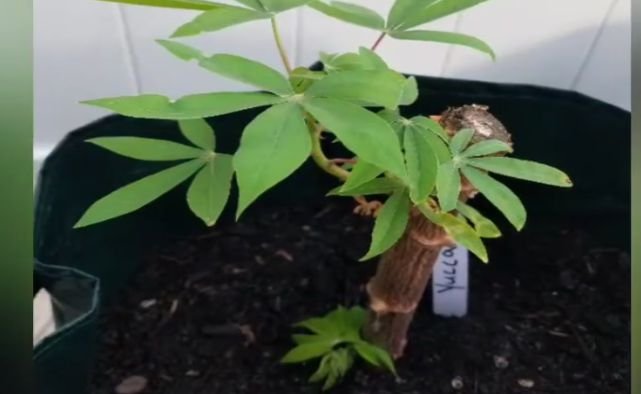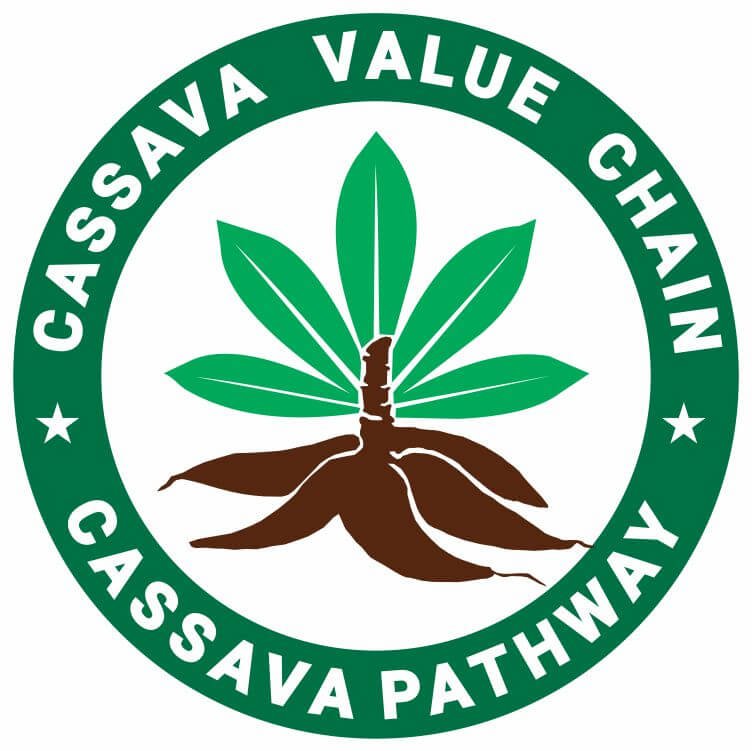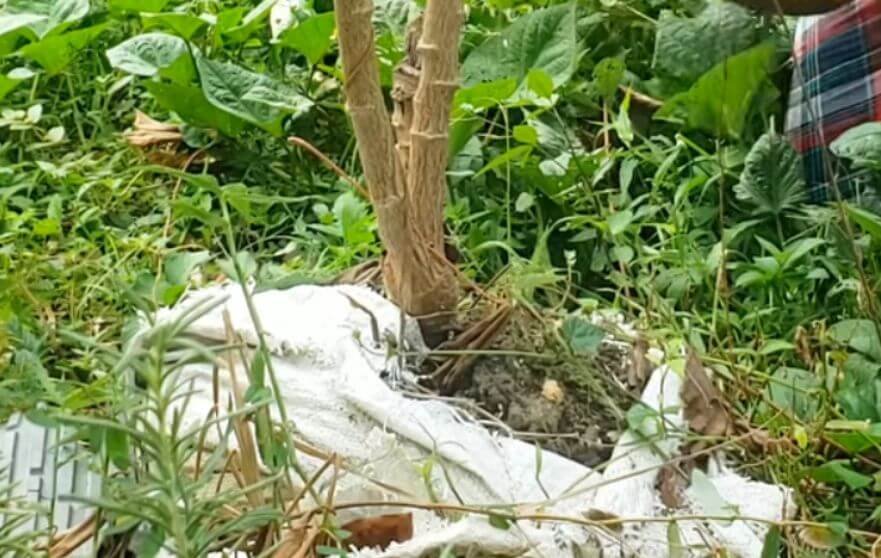Discover how to grow cassava plant in small spaces like containers and balconies, and care practices for a successful harvest
Growing cassava in small spaces is entirely possible with the right approach.
If have a tiny garden, balcony, or even just a few containers, you can cultivate cassava.
By using smart space-saving techniques and understanding the unique needs of cassava plants, you can enjoy a bountiful harvest even in limited areas.
Ideal for urban gardeners, cassava provides sustained energy and essential nutrients, thriving in various soil conditions with minimal requirements.
In this guide, we’ll explore practical steps to help you successfully grow cassava in tight spaces.
To Know How to Grow Cassava in Small Spaces, You Must Follow the Following
- Choose the right variety
- Plant and care for the young cassava
- Harvesting the cassava roots the right way
Choosing the Right Variety and Preparing for Planting
Choosing the Right Variety
Knowing how to grow cassava in small spaces entails choosing the right variety of stems. Selecting an appropriate variety is crucial.
Dwarf or smaller cassava varieties are particularly well-suited for restricted areas.
These compact plants not only save space but are also easier to manage.
Among the well-regarded varieties are ‘TMS 30572’ and ‘TME 419,’ known for their high yield and disease resistance.
Additionally, ‘BRA 12/’ is a dwarf variety that thrives in confined conditions, making it an ideal choice for small gardens.
Preparing for Planting
Once you have chosen the right variety, ensure that you are selecting healthy cuttings or slips for planting.
It is essential to use disease-free cuttings to promote vigorous growth.
Cut the cassava stems into approximately 6-9 inches in length cuttings with at least two to three nodes.
Nodes are the bumpy protrusions on the cassava stems where plumules shoot out from.
Avoid using cuttings that appear wilted or have any signs of disease.
Soil Preparation
Preparing the soil is another important step on how to grow cassava in small spaces.
If opting for container gardening, select pots that are at least 18-24 inches in diameter and 20 inches deep to accommodate the tuberous roots.
Ensure that your containers have adequate drainage holes to prevent waterlogging.
A recommended soil mix for cassava includes a well-balanced combination of organic compost, loamy soil, and sand to ensure proper aeration and drainage.
Further Reading: How to Preserve Cassava Roots
Raised Beds and Small-Space Solutions
For those planting in raised beds or other small-space solutions, preparing the planting site is equally important.
Raised beds should be at least 12-18 inches deep and filled with a nutrient-rich, well-draining soil mix.
Enhance soil fertility by incorporating organic matter such as compost or well-rotted manure.
Additionally, consider slightly mounding the soil at the planting site to facilitate drainage and root development.
Recommended: Bitter vs Sweet Cassava
Proper soil preparation provides not only a robust foundation for cassava growth but also enhances the plant’s resilience, ensuring a bountiful harvest even in limited spaces.
By carefully selecting the right variety and preparing an optimal planting environment, you can successfully grow cassava, making the most out of your small gardening space.
Related Posts
The Type of Soil Suitable for Cassava Growth
Climate Impact on Cassava Farming
Different Methods of Planting Cassava
Planting and Caring for Cassava in Small Spaces

As described above, learning how to grow cassava in small spaces require that you select and prepare your planting material.
Start with healthy cassava cuttings, ideally sourced from reputable suppliers to ensure disease-free plants.
Here are steps that follow the procurement of quality cassava stems:
Soil and Planting Depth
When planting cassava stems in containers or raised beds, endeavor to make the soil is well-drained yet retaining adequate moisture.
The ideal planting depth for cassava cuttings is approximately 6 to 8 inches, with each cutting spaced around 12 to 18 inches apart to allow sufficient room for root development.
Watering and Mulching
Proper watering is needed for cassava growth. Maintain a consistent watering schedule, ensuring that the soil remains moist but not waterlogged.
Mulching is very much recommended to conserve soil moisture, suppress weeds, and regulate soil temperature.
Use organic mulch, such as straw or wood chips, applying a layer about 2 to 3 inches thick around the base of the plants while keeping it slightly away from the stems to prevent rot.
Fertilization

Fertilization is another key aspect of caring for cassava plants. A balanced fertilizer high in potassium will promote healthy root development.
Apply fertilizer according to the manufacturer’s instructions, typically every 4 to 6 weeks during the growing season.
Organic options like compost or well-rotted manure can also provide essential nutrients while improving soil structure.
Pest and Disease Management
Cassava can face challenges from pests and diseases, even in small gardens.
Common pests include spider mites and aphids. Both can be managed naturally by introducing beneficial insects like ladybugs or by using insecticidal soaps.
When it comes to diseases, the primary concern is bacterial blight or root rot, which can be minimized by ensuring good air circulation, avoiding overwatering, and using disease-free planting material.
Regular monitoring and prompt removal of affected plants can help prevent the spread of diseases.
Monitoring Growth and Support Structures
Monitoring growth and providing support structures are vital for healthy cassava plants in small spaces.
Regularly check for signs of stress, pests, or disease.
If necessary, provide stakes or other support methods to keep the plants upright and promote better airflow.
By following these steps, you can successfully grow cassava in small spaces, ensuring a healthy and productive crop.
Harvesting and Utilizing Cassava
When to Harvest Cassava
Knowing when to harvest cassava is paramount to ensure you achieve the best yield from limited growing spaces.
Typically, cassava roots are ready for harvesting between 8 to 18 months after planting, depending on the variety and growing conditions.
Signs that indicate cassava roots are ready for harvesting include yellowing and dropping leaves, which suggest the plant has reached maturity.
Additionally, gently digging around the base of the plant can expose the top parts of the roots, giving you a visual cue of their size and readiness.
Harvesting Techniques
When harvesting cassava, it’s essential to carefully dig around the plant to avoid damaging the roots.
Using a garden fork, gently loosen the soil around the base, then lift the plant out of the ground.
Maximize yield by avoiding breakage, as damaged roots may not store well and could spoil faster.
For those growing cassava in small spaces, consider harvesting plants in stages, taking only the largest roots while allowing smaller ones to continue growing.
Storage Methods
The proper storage of harvested cassava roots involves several steps to maintain freshness and nutritional value.
For short-term use, keep the roots in a cool, dry place, and aim to use them within a week.
Cassava can also be stored longer by waxing the roots to prevent moisture loss or burying them in damp sand in a cool area.
For longer-term storage, cassava roots can be peeled, chopped, and dried, then stored in airtight containers or processed into flour.
Utilizing Cassava in the Kitchen
Cassava boasts universality in the kitchen, lending itself to numerous recipes.
For immediate use, you can peel, boil, and mash cassava similar to potatoes.
For a quick snack, try baking or frying the roots into crispy cassava fries. Cassava flour is an excellent gluten-free alternative, perfect for baking bread, cakes, and other pastries.
The nutritional benefits of cassava, including being a rich source of carbohydrates, vitamins, and minerals, make it a valuable addition to daily meals.
Exploring these simple yet delicious recipes can help you make the most of your homegrown cassava, bringing both taste and nutrition to your table.
Final Word from Cassava Pathway
Learning how to grow cassava in small spaces is achievable with careful planning and the right techniques.
By selecting the right variety, using containers or raised beds, and providing proper soil, water, and sunlight, you can enjoy a healthy cassava harvest even in limited areas.
Regular pruning and harvesting help maintain plant health and productivity, making cassava cultivation both rewarding and sustainable, no matter the size of your garden.

Chimeremeze Emeh is a writer and researcher passionate about Africa’s most transformative root crop—cassava. Through his work at cassavavaluechain.com, he explores the entire cassava industry, from cultivation and processing to its diverse applications in food, health, and industrial use.
He also writes for palmoilpalm.com, where he shares his extensive experience and deep-rooted knowledge of palm oil, covering red palm oil, palm kernel oil, and refined products. His work there reflects his lifelong connection to agriculture and his commitment to promoting sustainable value chains in Africa.
Driven by curiosity and purpose, Chimeremeze aims to shed light on how cassava continues to empower communities, strengthen food systems, and link traditional farming wisdom with modern innovation.

